Geothermal Capacity Assessment Report & Toolkit
When visiting communities across Nova Scotia to present information and discuss potential development of geothermal projects, the Geothermal Capacity Assessment Team decided to create a toolkit to visually communicate a technology that happens mostly underground.
This toolkit includes a set of helpful infographics to visually convey the fundamentals of how geothermal technologies work, and how they can be applied in Nova Scotia.
Come here when you want to:
- Read the final report, including presentations provided by community leads
- Learn more about geothermal technologies
- Access easy-to-understand educational resources to share with others
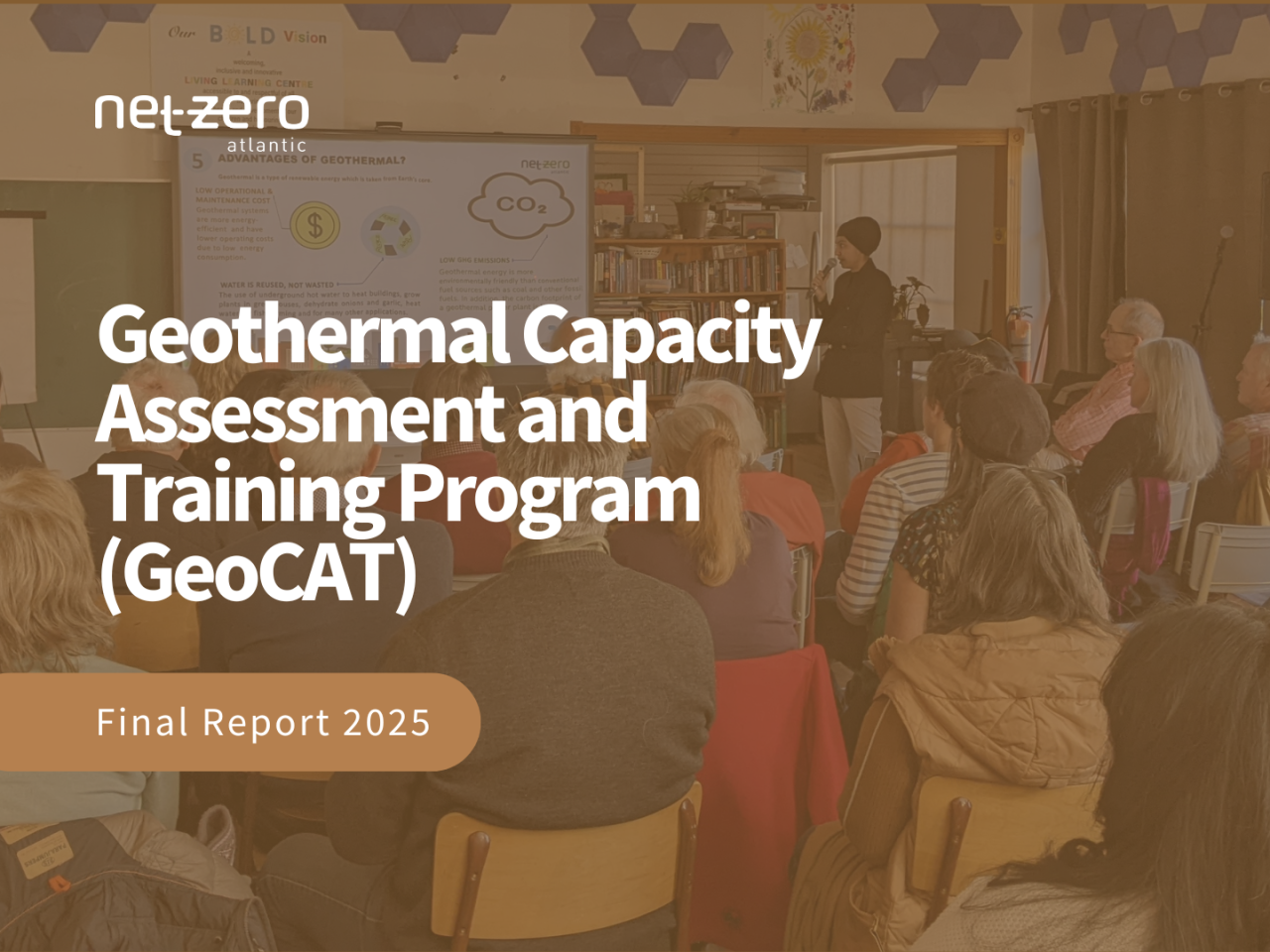
68 Activities and 6 Community Leads Helped Build Local Capacity
The Geothermal Capacity Assessment and Training (GeoCAT) program transferred existing knowledge of Nova Scotia’s geothermal resources and project development methods to stakeholders in key rural and Indigenous communities. The final report summarizes the methods, results, and overall recommendations for future geothermal development in Nova Scotia.
10 Infographics to Simplify Geothermal Energy Systems and Uses
As a final step of the program, the GeoCAT team are lending their project development expertise to community representatives for training others. The GeoCAT Toolkit is a package of professional quality assets for future presentations.
Toolkit Infographics: Geothermal District Heating and Cooling | Geothermal Heating Generation | Geothermal Heating: Additional Considerations | Geothermal District Heating and Cooling with Mine Water | Geothermal Small-Scale Residential Generation | Nova Scotia's Pathway to Geothermal Development
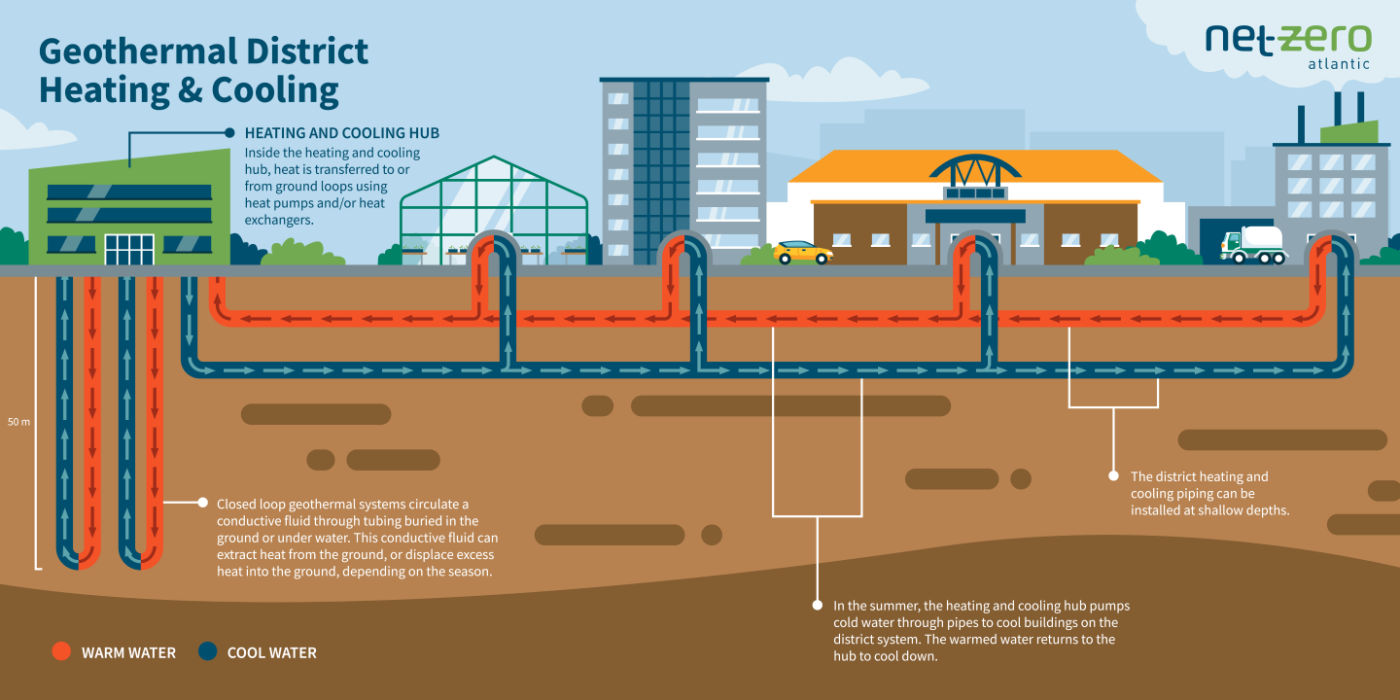
Geothermal District Heating and Cooling
These two infographics show how a geothermal district heating and/or cooling facility can provide temperature control to a variety of buildings in summer (pictured above) and winter.
View and download graphics
Information on the graphic
The closed loop geothermal system extends approximately 50 m below surface. They circulate a conductive fluid through tubing buried in the ground or underwater. This conductive fluid can extract heat from the ground, or displace excess heat into the ground, depending on the season. Inside the heating and cooling hub on the surface, heat is transferred to or from the ground-loops using heat pumps and/or heat exchangers. In the summer, the heating and cooling hub pumps cold water through the pipes to cool buildings on the district system. The warmed water returns to the hub to cool down. The reverse process happens in winter. The district heating and cooling piping can be installed at shallow depths.
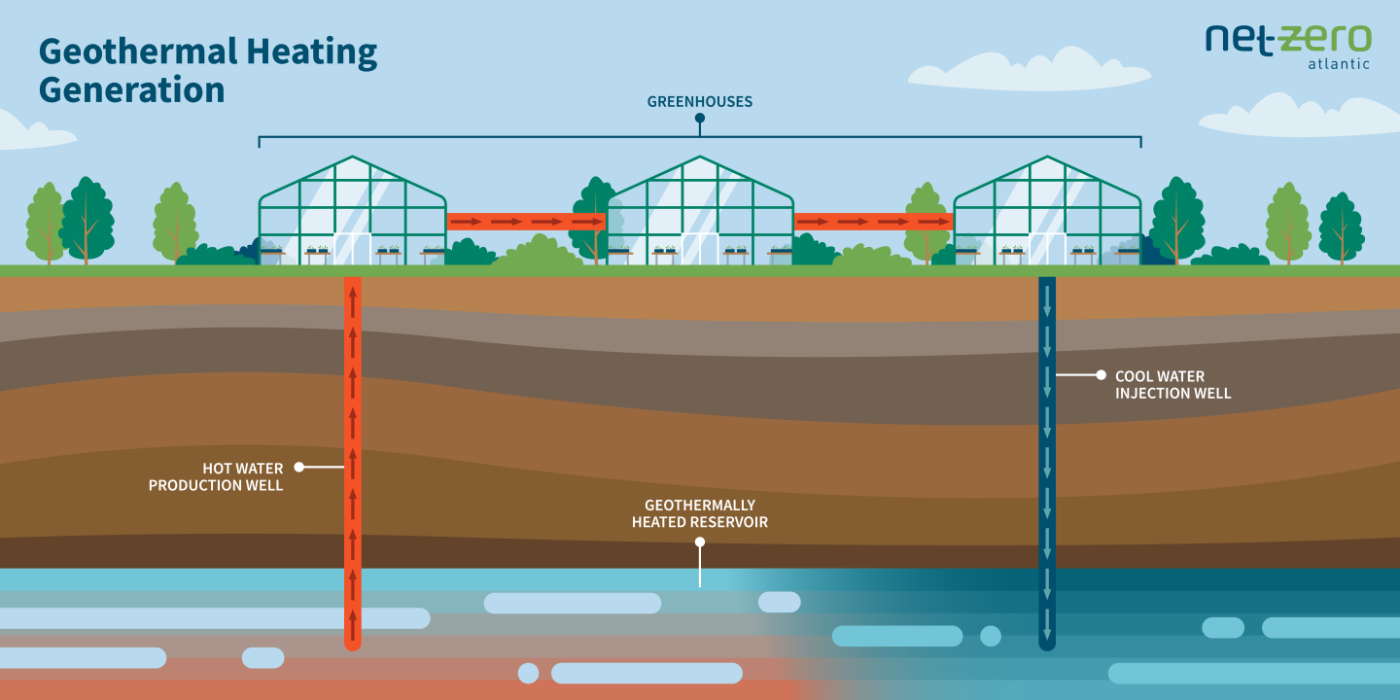
Geothermal Heating Generation
This image shows how a simple geothermal ‘loop’ can provide heat from the earth to a network of greenhouses, before returning the cool water to the earth.
View and download graphic
Information on the graphic
The simple geothermal loop uses the hot water production well to draw heat from the geothermally heated reservoir. The hot water moves from greenhouse to greenhouse in the network. At the last greenhouse, water flows through the cool water injection well and into the geothermally heated reservoir.
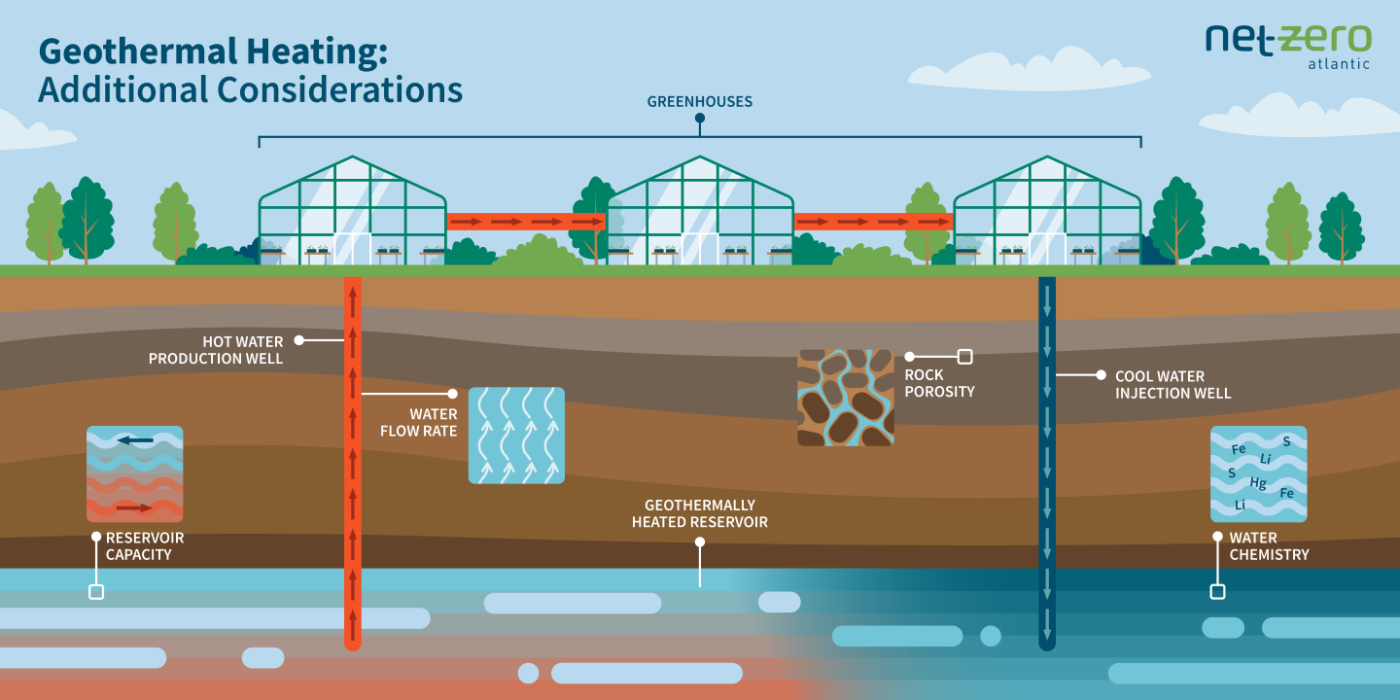
Geothermal Heating: Additional Considerations
Building on the heating generation image, this infographic shows some additional considerations for a geothermal heating loop.
View and download graphic
Information on the graphic
Additional considerations for geothermal heating include:
- Reservoir capacity - the flow of cool water on top and hot water below.
- Water flow rate - the speed and pressure of water travelling from the reservoir to the surface.
- Rock porosity - this will affect how easily water can flow underground and will impact the water flow rate.
- Water chemistry - the levels of iron (Fe), lithium (Li), sulfur (S), and mercury (Hg). Many underground chemicals are toxic and corrosive, and require specialized designs to ensure safety and long-lasting infrastructure.
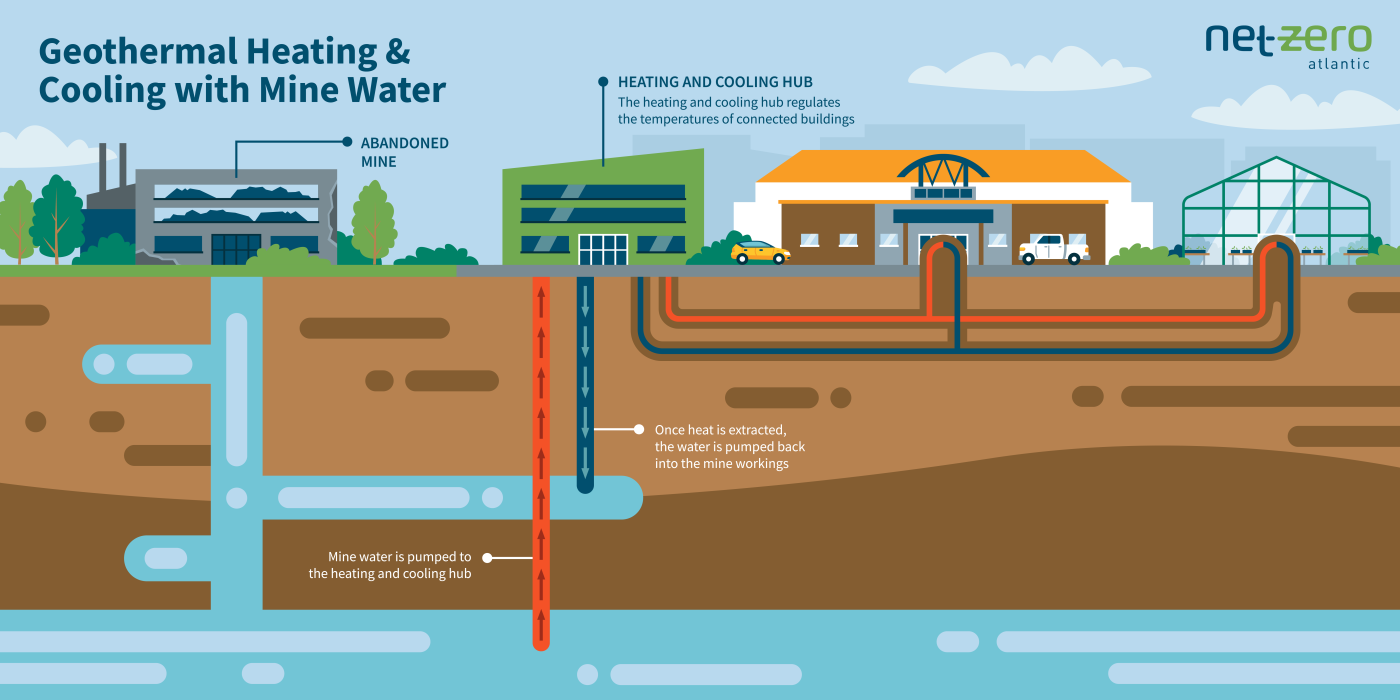
Geothermal District Heating and Cooling with Mine Water
This infographic shows how warm water can be extracted from old mine workings, and fed into a small district heating and cooling system for a community.
View and download graphic
Information on the graphic
A geothermal heating and cooling district using an abandoned mine takes advantage of the warm water temperatures within the mine’s workings to provide heat to a network of buildings. The heating and cooling hub regulates the temperatures of connecting buildings. Once heat is extracted, the water is pumped back into the mine workings. The loop continues.
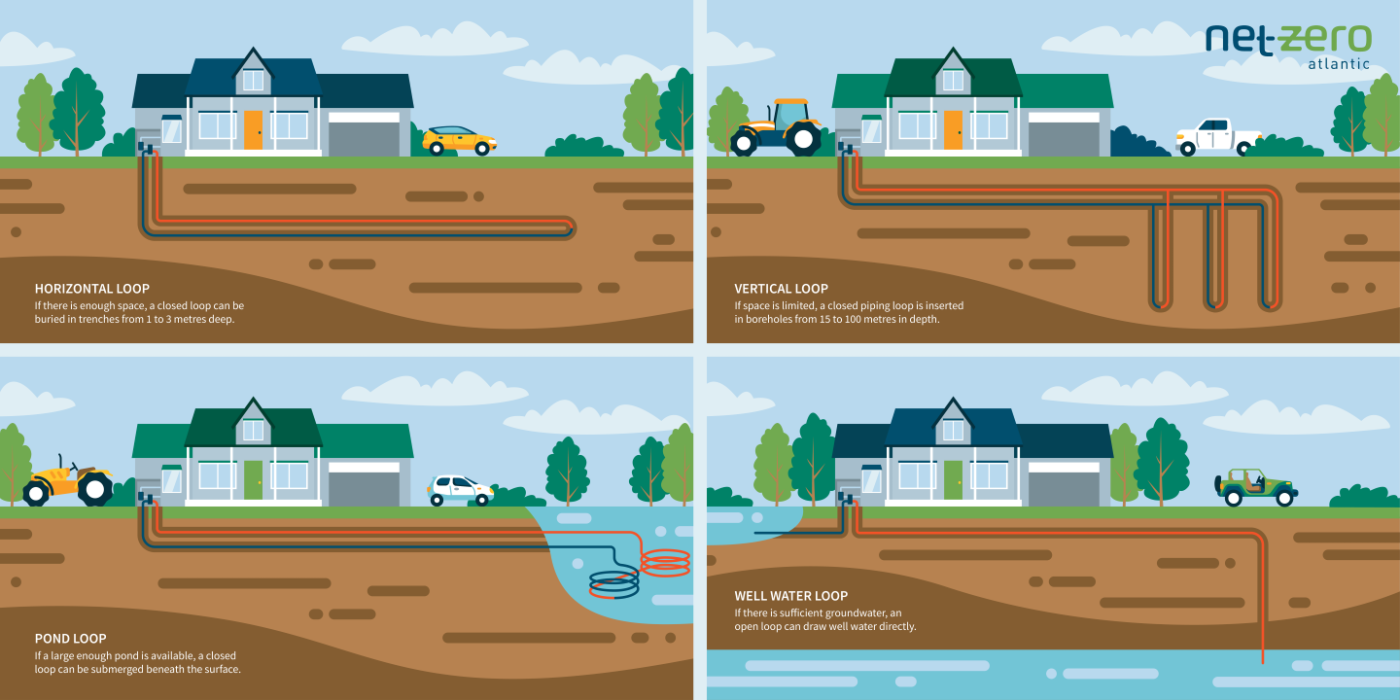
Geothermal Small-Scale Residential Generation
This set of infographics show several configurations for small-scale residential ground source heat pumps.
View and download graphics
Information on the graphic
If there is enough space a closed loop can be buried in trenchers from 1 to 3 metres deep (horizontal loop). If space is limited, a closed piping loop is inserted into boreholes from 15 to 100 metres in depth (vertical loop).If there is sufficient groundwater, an open loop can draw well water directly (well water loop). If a large enough pond is available, a closed loop can be submerged beneath the surface (pond loop).
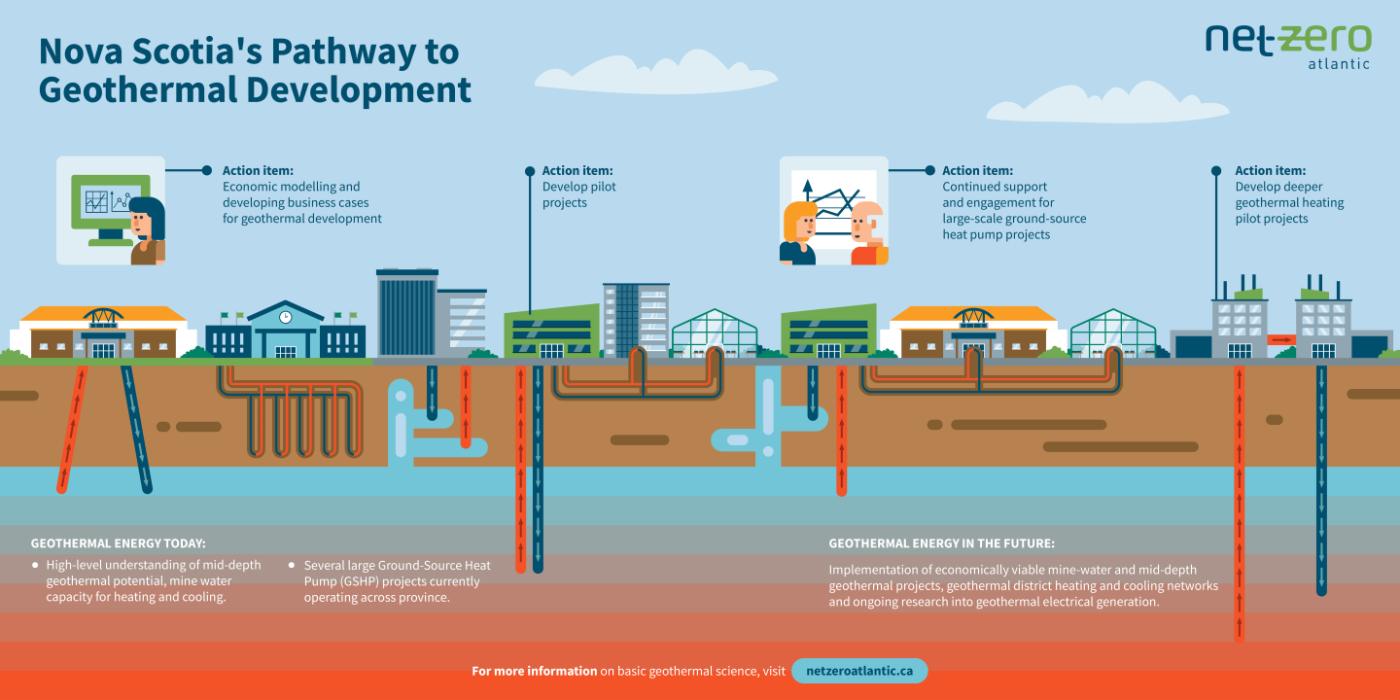
Nova Scotia's Pathway to Geothermal Development
This infographic suggests a path forward, moving from left to right, for developing Nova Scotia’s geothermal potential.
View and download graphic
Information on the graphic
In Nova Scotia, there is a high level of understanding of mid-depth geothermal potential and mine water capacity for heating and cooling. Several large Ground-Source Heat Pumps (GSHP) projects are currently operating across the province. Some next steps for developing Nova Scotia’s geothermal resources would include the implementation of economically viable mine water and mid-depth geothermal projects and geothermal district heating and cooling networks, and ongoing research into geothermal electrical generation. This pathway would require the following actions: economic modelling and developing business cases for geothermal development, continued support and engagement for large-scale ground-source heat pump projects, and developing deeper geothermal heating pilot projects.
